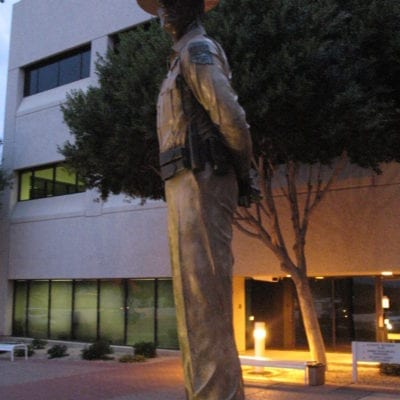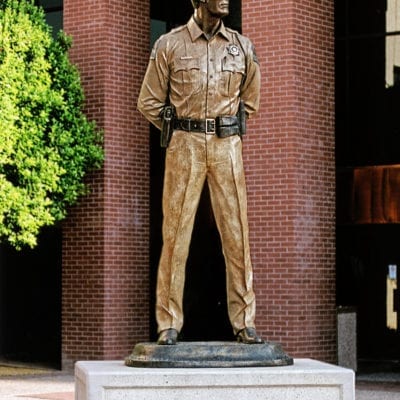By Rosemary Sobol and Hannah Leone Chicago Tribune
CHICAGO — For the second year in a row, the number of homicides and shootings in Chicago dropped by double-digit percentages in 2018, though some neighborhoods on the West and South sides continue to bear the brunt of gun violence as they have for decades.
Homicides dropped by 15 percent, shootings by 18 percent, according to data kept by the Tribune. That continues a trend from 2016, when violence reached levels not seen since the 1990s.
“Are we where we want to be? Of course not,” Chicago police Superintendent Eddie Johnson told the Tribune. He attributed the progress over the last year to improved technology, more federal involvement in investigations of gun crimes and continued efforts to rebuild community trust.
“I do think we are taking steps in the right direction,’’ he said.
As of Friday, more than 2,900 people had been shot and there were at least 570 homicides this year, according to statistics kept by the Tribune.
Last year, at least 3,567 people were shot and at least 675 homicides were recorded.
The data also show that two of the most violent police districts last year were still among the top areas for shootings and homicides this year: Harrison on the West Side and Englewood on the South Side, both encompassing neighborhoods that have long struggled with crime.
A third district, Calumet on the Far South Side, was hit by a 33 percent increase in homicides and a 21 percent increase in shootings, according to the Chicago Police Department.
For many residents in these neighborhoods, it was more a year of loss than progress.
In Roseland in the Calumet District, Adrienne Lando stood in a field where two teenage boys had been shot dead in August. When she learned one of the teens was a boy who had lived with her during a difficult period in his life, she collapsed in the grass and sobbed, repeating his nickname: “Bibby.”
In Englewood, where murders were up 8 percent over last year, a young mother was shot while holding her baby at a September party for the child’s father — who was killed in a West Englewood shooting in March 2017. “Why they gotta shoot her when her baby is in her hands?” the woman’s mother, Jewel Maddox, asked outside the hospital where surgeons operated on her daughter.
In West Garfield Park, a violent area of the Harrison District where homicides increased by 3 percent, a girl holding her baby cousin was shot and killed in the street in June. She’Nyah O’Flynn, 12, had been in town from Michigan visiting family. The girl’s mother, She’Vaughn O’Flynn, rushed from Michigan to Stroger Hospital, still wearing pajamas, and prepared herself to see her daughter’s body. “I actually grew up with her, in a sense,” O’Flynn told the Tribune. “She humbled me.’’
The spike in the Calumet District stems from a “really horrible gang issue over there,’’ Johnson said. “We’re well aware of what’s driving it.” The superintendent said the department was “working really hard” to bring down the violence there, but declined to provide details, saying he did not want to divulge strategy.
In the Englewood District, former Cmdr. Kenneth Johnson had earned praise for overseeing a big drop in violence in what has been one of the city’s most violent areas. But he was charged this year with stealing more than $360,000 in Social Security funds in a scheme that lasted more than 23 years. As of Friday, Englewood looked to end the year with 50 homicides, third highest in the city. The superintendent said he didn’t believe Johnson’s indictment and removal as commander played a part in the increased crime.
“No, I think there’s a number of contributing factors to that,’’ he said. “They did such a great job last year, now they’re competing against those numbers. We have lost some momentum there.’’
A persistent gang conflict has recently erupted again, but Johnson said he was “confident in the leadership over there.”
Richard Rosenfeld, chairman of the Department of Criminology and Criminal Justice at the University of Missouri at St. Louis, said the city needs to see big declines in traditionally violent areas too.
“The data for Chicago — and this is the case no matter where one looks — makes it dramatically clear when we talk about a city homicide rate, we are talking about a very mixed bag, where some areas are dropping and other areas are flat or have experienced more homicides this year than year-to-date last year,’’ he said.
The Central and Near North districts, which cover downtown, experienced sharp increases in aggravated batteries, with 503 reported in 2018 — 114 more than in 2017. Both areas also had more shootings.
And despite the steady decline citywide, Chicago continues to have more homicides than New York City and Los Angeles combined. As of about mid-December, New York City had 278 homicides and Los Angeles 243.
Still, Rosenfeld acknowledged that “when we see a 14 or so percent decline in homicide, especially in a city in which homicides have been spiking up in recent years, that is … meaningful.”
Johnson credited three main factors for the downward trend. The first was greater use of strategic decision support centers, or “mini-war rooms,’’ designed to better predict where shootings may occur and respond more quickly to gunfire. District supervisors analyze data in real time through a computer program call HunchLab to determine where to deploy patrol and tactical officers.
The department has expanded the number of districts that have such centers — 20 of the city’s 22 districts — but they have been operating the longest in the Harrison and Englewood districts that are still among the most violent in the city.
Still, Johnson said he was “encouraged by all the things that we’re doing, including investing in the technology approach to crime fighting, because that makes us more proactive and more predictive.’’
A second factor was the department’s collaboration with federal agencies, including the FBI and the U.S. attorney’s office.
Johnson pointed to a carjacking case that played out downtown in April. Johnson pointed to a carjacking case that played out downtown in April. Two people, one of them an elderly man, were shot during a crime spree that included the carjacking of an undercover Chicago police officer in the Near North neighborhood.
The attack was the first time the U.S. attorney’s office got involved in a local carjacking case, Johnson said. A carjacking task force was put in place, and police have reported a drop in carjacking the last half of the year. Additional federal help came in continuing investigation into the random killings of two men in Rogers Park, a case that remains open.
The third — and “possibly the most important’’ — factor is the continuing efforts to build trust between the police and community in a year when a Chicago police officer, Jason Van Dyke, was found guilty of second-degree murder and aggravated battery for the on-duty killing of Laquan McDonald, who was shot 16 times.
Johnson referred to “no-snitch zones” that criminals see as safe havens because they know the residents will not talk to police. “They’re afraid of possible retaliation,’’ Johnson said. “Let’s face it — the police don’t witness a lot of these crimes but we have to rely on them to point us in the right direction.”
For the new year, Johnson said he hopes to further expand the strategic centers, making them available to detectives.
“Strategic centers worked so well in patrol that we are going to duplicate that effort in the detective area,’’ the superintendent said. “Hopefully this will help the clearance rate.”
The clearance rates for Chicago police detectives have fallen to embarrassing lows, about 20 points below national averages and far beneath other big cities like New York and Los Angeles.
“I want to see the Chicago Police Department better and we’re not there yet,” Johnson acknowledged.
The superintendent said he wants to be remembered as someone who “brought the CPD into the 21st century’’ and who “fought valiantly’’ to improve failing relationships with the community and police officers.
“We’re only as strong as the faith the community has in us,” he said. “I want people to be able to say to me: ‘I feel safer now than I did some years ago.’ ’’
———
©2018 Chicago Tribune






